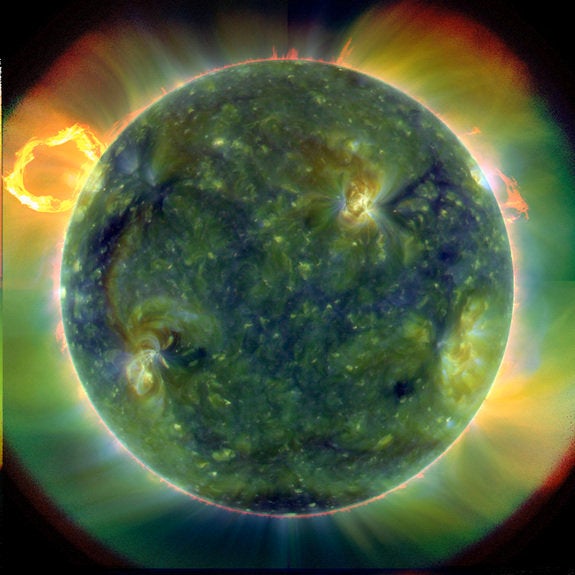NASA's latest up-close examination of Jupiter revealed a surprise in one of the planet's best-known features.
The Great Red Spot, a high-pressure storm that resembles a giant hurricane, has what the space agency is calling an "unusual wispy filament" that spans almost the entire width. NASA says this "filamentary streamer" rotates, twists and gets distorted by the 330-mph winds inside the massive vortex.
“Every time we look at Jupiter, we get tantalizing hints that something really exciting is going on,” Amy Simon, a planetary scientist at NASA’s Goddard Space Flight Center in Greenbelt, Maryland, said in a news release. “This time is no exception.”
The new images taken by the Hubble Space Telescope also show that the Great Red Spot is changing into more of an orange color, and that it continues to shrink, although at a slightly slower pace than expected.
The spot is currently about 150 miles shorter than it was last year, making it just about 10,000 miles across. At its peak in the late 1800s, the Great Red Spot was estimated to be about 25,500 miles long, or more than triple the 7,900-mile diameter of the Earth, NASA says.
The agency has created an animated gif that gives an up-close look at the movement of the planet's clouds. The inset images show the Great Red Spot in both the blue and red wavelengths, revealing the newly discovered filamentary feature swirling inside it:
(Story continues below image)
Taken by Hubble's Wide Field Camera 3, the images represent nearly back-to-back rotations of the planet, which allow scientists to determine details down to windspeed, according to NASA.
The images are part of the agency's Outer Planet Atmospheres Legacy program, which will capture detailed pictures of Jupiter, Neptune, Uranus and -- eventually -- Saturn.
"The long-term value of the Outer Planet Atmospheres Legacy program is really exciting,” Michael H. Wong of the University of California, Berkeley, said in a news release. "The collection of maps that we will build up over time will not only help scientists understand the atmospheres of our giant planets, but also the atmospheres of planets being discovered around other stars, and Earth’s atmosphere and oceans, too."
Smith, Wong and Glenn Orton of NASA’s Jet Propulsion Laboratory in Pasadena, are coauthors of a study published in Astrophysical Journal explaining what the new images of Jupiter reveal.
Also on HuffPost:

